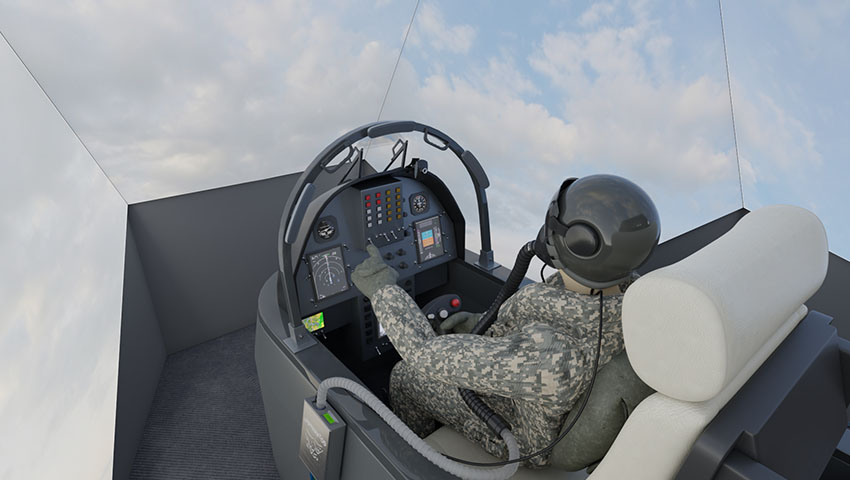The Royal Australian Air Force has selected Melbourne-based Biomedtech Australia to provide its GO2Altitude hypoxia training systems to the new Air Academy at RAAF East Sale.
The systems are to comprise of a six-person fully computerised and integrated classroom, with a two-person cockpit procedural trainer. Go2Altitude systems are purpose designed for hypoxia training, including a flight simulator for the purpose of recognising hypoxia.
Training can be done as a crew or in formation, with hypoxia segment secretly delivered in a helmet or oxygen mask in order to help the pilot(s) recognise the symptoms.
Biomedtech managing director, Oleg Bassovitch said "each person's experience is individual" with hypoxia, and recognising oncoming symptoms is incredibly important.
Hypoxia is the deprivation of oxygen to the brain, and is considered one of the biggest dangers when flying a plane.
As part of the contract, BiomedTech is contracted to provide two different systems to the RAAF over a month-long period, including:
- Classroom non-task specific hypoxia awareness and education for new recruits and specialised, ongoing refresher training; and
- Integrated CPT training for the RAAF's new PC-21 ground trainers supplied by Lockheed Martin Australia.
The combined classroom and simulator GO2Altitude training for military aviation includes:
- Classroom task-non specific computerised neurocognitive testing. This is a multi-person, fully integrated, purpose-designed system for classroom hypoxia awareness training. Automatic safety cut-off, video and printed report. All required gases are generated onsite, using proprietary air-separation technology (molecular sieve);
- Battery of neurocognitive tests for in-chamber hypoxia education. Battery of cognitive tests is repeatedly delivered via touch-screen tablet Microsoft Surface (Windows 10), while the test results, vital signs and video of the persons performing the training are transmitted wirelessly to the operator console located outside of the chamber. The student wears a wrist based pulse oximeter that transmits important physiological information to the GO2Altitude software for safety monitoring;
- GO2Altitude integrates into a flight simulator for the purpose of hypoxia recognition. Training can be done as a crew or in formation. During a prolonged session (tens of minutes to hours) inside of the simulator(s) pilots are using their regular helmet and oxygen mask, connected to GO2Altitude hypoxicator. Hypoxia segment is secretly delivered to the pilot(s) who are expected to recognise their symptoms that they learned using the classroom system and take corrective action. Physiological parameters are recorded and video and printed report are automatically produced; and
- Integration with various flight simulator types via simple GO2Altitude Communication interface. Integration is now achievable thanks to the patented GO2Altitude exchange protocol.
A number of air disasters have been linked to hypoxia, including the crash of Helios Airways Flight 522 in Greece, which killed all 121 on-board the flight.
"If you've never been drunk, you don't know what it feels like. It is the same with hypoxia," Bassovitch said.
Melbourne-based Biomedtech specialises in research, development and manufacturing advanced hypoxicators, both for aviation as well as athletics.









